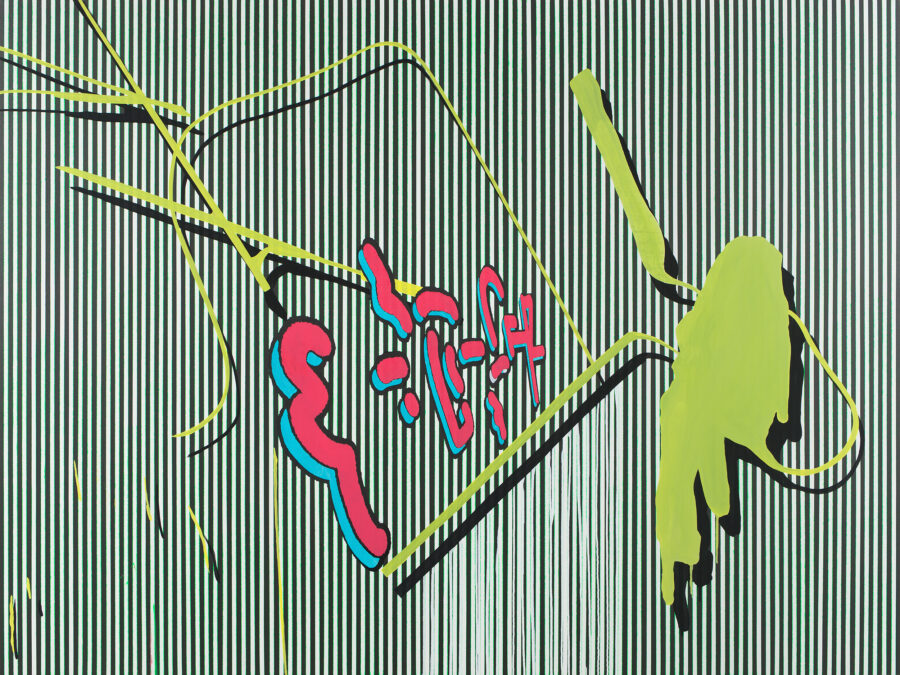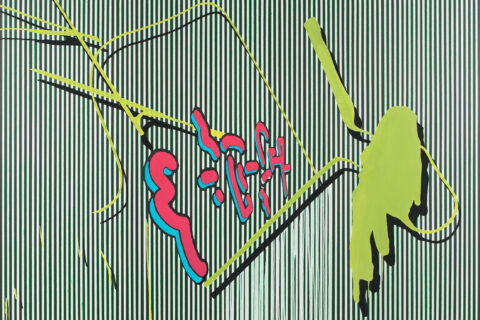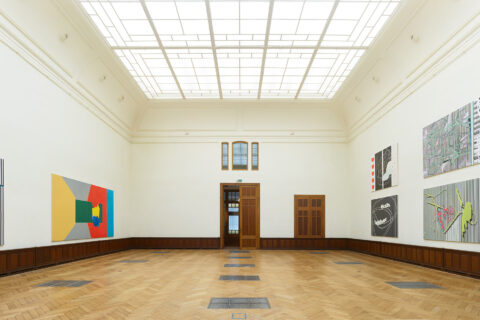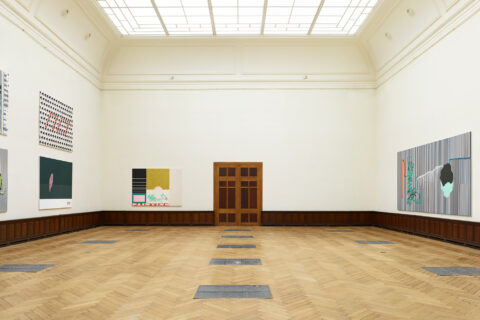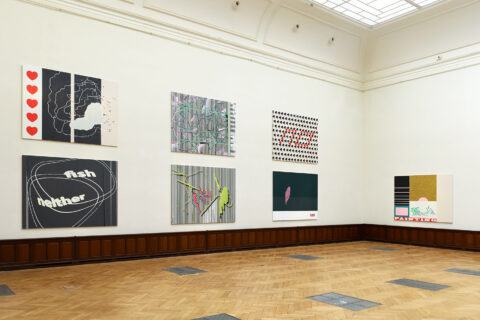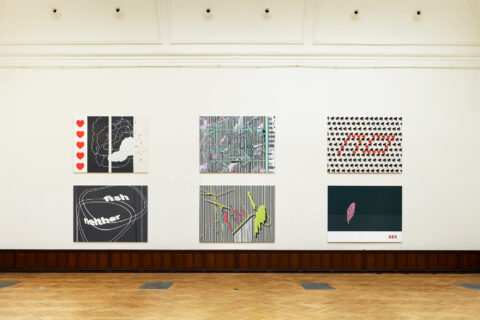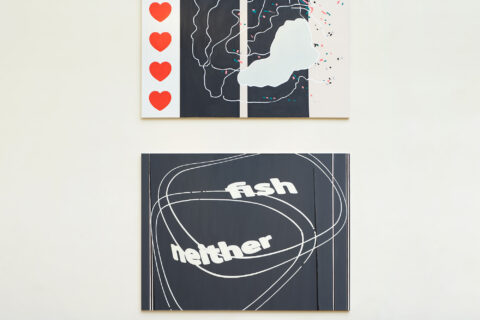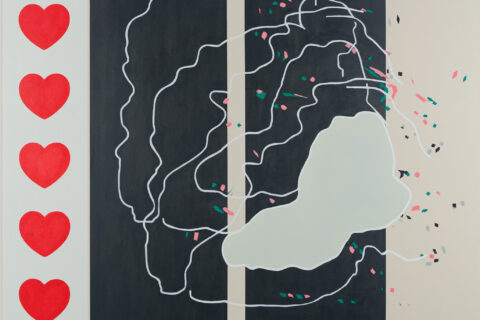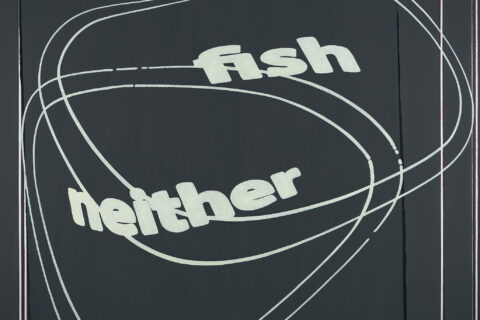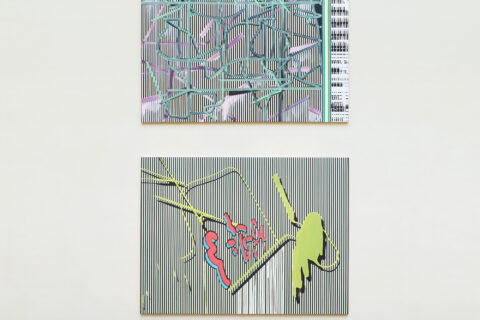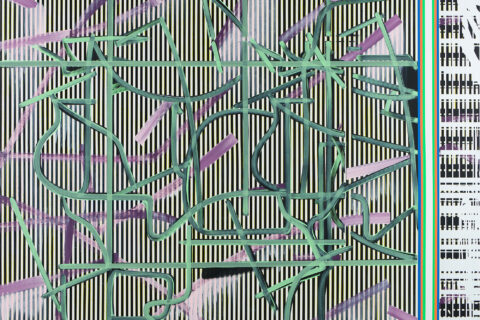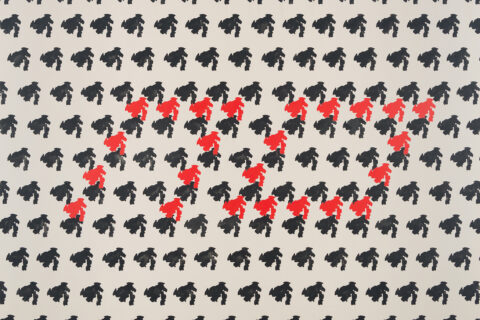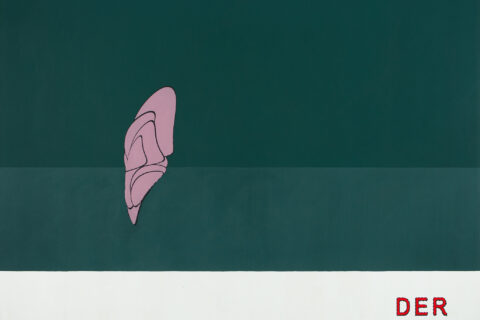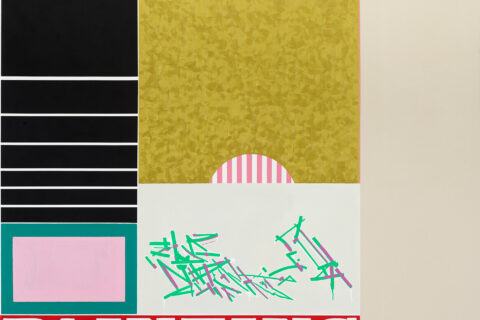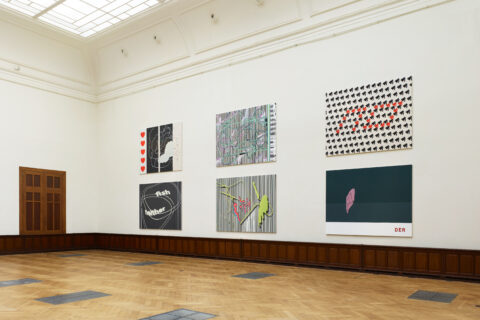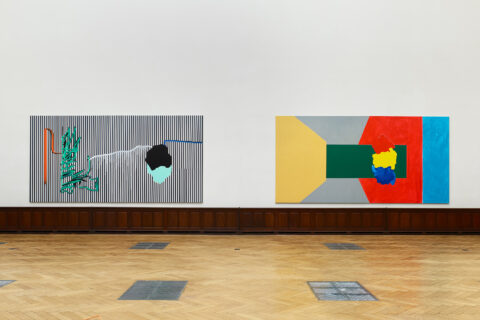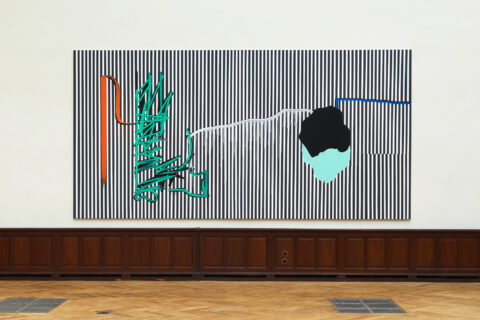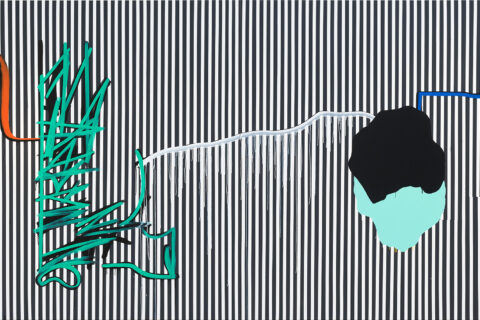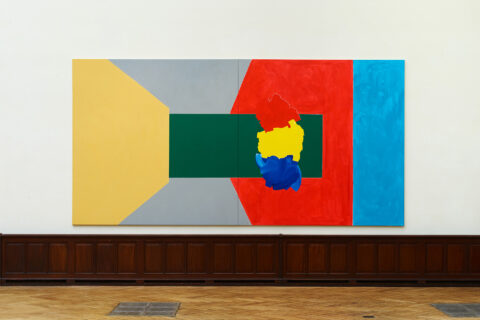Egan Frantz Recent Paintings
02/04/2022 – 01/05/2022
Galerie Nagel Draxler @ Lempertz, Brussels
Grote Hertstraat 6/Rue du Grand Cerf
1000 Bruxelles
Opening / Eröffnung:
Freitag, 1. April 2022
Friday, April 1, 2022
Press Release
Galerie Nagel Draxler is pleased to invite you to our 5th solo exhibition of the American painter Egan Frantz. Taking place in the historic Art Nouveau hall of Lempertz Brussels, we selected paintings from his most important exhibitions of the last three years: His first institutional solo show at the Neuer Aachener Kunstverein (2019), his stunning presentation at New York's Team Gallery (2019 ), "The Praying Boy" at our Berlin gallery (2020), and the extensive survey “Not Enough Words” (cat.) at Foundry Seoul (2021).
"To be an artist is to build a system, a methodology for articulating something abstract, an experience irreducible to logic and language. This is what differentiates art from other forms of work and makes the artist's system necessary. Anyone with a sufficient attention span can be taught to competently paint a wall, but technical skills are never enough to make someone into a great artist. A virtuosic draftsman may be unable to give life to his perfectly rendered subjects and an untutored artist without any knowledge of gessoing or perspective may paint devastatingly. This may go without saying, but system building is a more fraught process than it once was. In the wake of the 20th century, an artist cannot find their voice by simply painting landscapes with a particular sensibility. Conceptualism's introduction of intellectual self-consciousness into art has made it de rigueur for artists to not only work in their medium but simultaneously to juggle their physical labor with the new anxiety of reflexive thought, a neurosis about what one does and how they should do it. The challenge of this added burden is to treat this reflection with as much freedom and sensitivity as one would a conventional artistic task, like the portrayal of a landscape. In the absence of traditions where subject matter is settled beforehand, such as folk forms, devotional images, or painting from life, the painter has much to consider: should the art be figurative or abstract? if abstract, what manner of abstraction? if it is figurative, what is the figure? should the figure be invented, taken from life, or appropriated? should the lines be clean or sketchy? These questions can lead to fretting over the right answer but, of course, there are no right answers. Instead, the artist must harmonize their abundance of options into an expanded working system that incorporates both the decisions they have made and an implicit awareness of the decisions they didn't make.
These considerations are true of all contemporary art, but they are particularly animated in Egan Frantz's paintings. Strictly formalist at first glance, his profusion of painterly methods refuse to settle into a staid formula, even with the persistence of their hard edge and his discrete separation of elements within a single picture plane and from canvas to canvas. Rather than a strict adherence to any style as better than any other, he employs his techniques both emotionally and at a distance; the styles are interchangeable, as if picked from a toolbox, but he demonstrates a sensitivity to the composition of a whole through the assemblage of these parts. Meticulous op art stripes contrast with strokes that drip, scuttle anxiously, or splatter at would-be random if not for the addition of a drop shadow that lends them a paradoxical fixity. Language casually populates the canvasses with willful imprecision, as words like Fish, Neither, Der, No, and Painting leave no clues of their significance. Some isometric squiggles in blue-green could be a stylized Asian script, or perhaps just a collection of isometric squiggles that suggest an Asian script. However, the two possibilities are pure trivia because there is no utility to understanding the words. Letters are fundamentally shapes, and the semantic content of those shapes is of little interest to Frantz, at least in a conventional sense. More broad-mindedly, the meanings of those words are used as compositional elements of the paintings, not as words. Composition is the real core of these works, a bridge between the two poles of form and content that adjudicates whether or not the artistic system functions. The question of an artwork's success lies not in asking what or why something is done, but in how it is done. The proof of the painting is in the seeing. A word, a striking block of color, or an unpainted segment of canvas does not matter on its own terms, it matters in the context of the painting. That Frantz assembles his perpetually disparate elements into a cohesive whole is the vitality of his practice. Instead of aping a style from a simpler, bygone period, he deftly applies the breadth of the contemporary technical palate, an acrobatics of style that reflects the contemporary state of painting back at itself with grace and clarity."
– Sean Tatol
_________________
Wir freuen uns, Sie zur 5. Einzelausstellung des amerikanischen Malers Egan Frantz mit unserer Galerie einladen zu können.
Die großformatigen Gemälde, die wir im geschichtsträchtigen Art Nouveau Saal von Lempertz Brüssel versammeln, stammen aus seinen wichtigsten Ausstellungen der letzten drei Jahre, beginnend mit Frantz' erster institutioneller Einzelausstellung im Neuen Aachener Kunstverein und seiner fulminanten Präsentation in der New Yorker Team Gallery (beide 2019 und beide mit dem Titel "Paintings"), seiner Ausstellung "The Praying Boy" in unserer Berliner Galerie im Sommer 2020 und seiner umfangreichen Überblicksschau mit Katalog bei Foundry Seoul im Herbst 2021.
Die Gemälde von Egan Frantz sind Rätsel. Sie indizieren Formen, Gesten und Bedeutungen, die sich selbstbewusst kunsthistorische Referenzen zunutzte machen und in ein komplexes System von Bezügen einfügen. Worte und halb angedeutete figurale Elemente stehen im Vordergrund einer streng behaupteten, scharfkantigen Flächigkeit, die jedoch regelmäßig durch impulsive (aber nie gewaltsam eingesetzte) Streifen und Linien unterlaufen wird; selbst da wo die Elemente eines Bildes nicht durch die Unterteilung der Leinwand in Abschnitte voneinander getrennt sind, hebt sich jedes von den anderen als eigenständige Kategorie ab. So interagieren beispielsweise Sprachfragmente mit ihrem gestreiften Hintergrund nur deshalb, weil sie sich im selben Bild befinden. Es ist die Anordnung dieser Elemente zueinander, die das Werk zu einem Rätsel oder vielmehr zu einer Karte macht, denn diese Rätsel haben keine Lösung. Stattdessen dokumentieren sie die Wechselbeziehung eines Teils mit einem anderen und dieses mit einem dritten, und des dritten mit dem ersten, und aller drei gleichzeitig, und so weiter. Das entstehende Bild ist, wie man so schön sagt, mehr als die Summe seiner Teile. Eine Landkarte zeigt die Beziehungen verschiedener dokumentierter Punkte zueinander, ohne die Bedeutung ihrer Verbindung zu artikulieren; in ähnlicher Weise fordert Frantz den Betrachter auf, seine eigene Bedeutung in den Systemen zu entdecken, die durch seine Bilder in Bewegung gesetzt werden.
